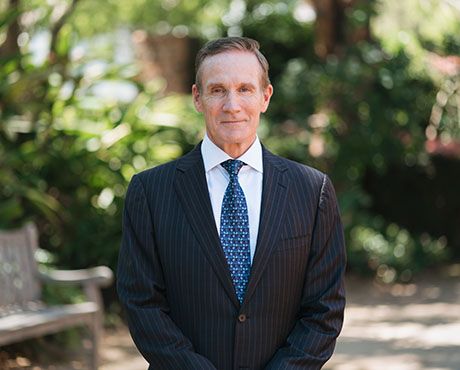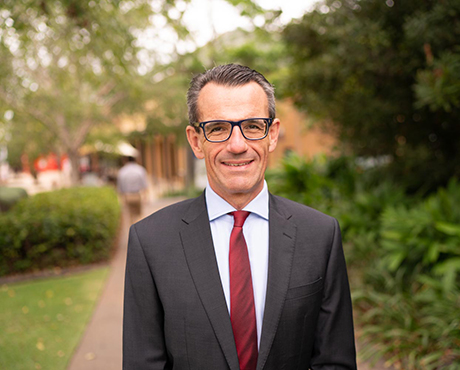
Have you visited Viva Engage yet?
News 11 JuneViva Engage is here. Access it easily via Microsoft Teams.
14 July 2021
Share
A message from Vice President Father Anthony Casamento csma:
You may have noticed that from time to time I post about our patron saints on Workplace. In fact, just recently I posted about St Thomas More, who is the patron saint of the ACU Thomas More Law School. Surprisingly, when I do post, I get a lot of enquiries from staff about who the patron saints are, what they do and what they have to do with ACU.
Put simply, the patron saints connected to our university form part of the rich Catholic identity of ACU. There are too many patron saints to mention in this brief reflection, but they include our campus patron saints such as St Thomas Aquinas of the Ballarat Campus, St Mary of the Cross MacKillop of North Sydney and St Patrick of Melbourne Campus. Some of the patron saints for our faculties and institutes include St Joseph the Worker for the Corporate Services directorate, St John Baptiste de la Salle for the Faculty of Education and Arts and St Hildegard of Bingen the patron of the Arts.
In the Catholic tradition, a saint is anyone in heaven. However, a person officially recognised as a saint through the formal process of canonisation is someone known for having lived a life of exceptional closeness (or holiness) to God.
A patron saint is someone recognised by the Church as a saint, who also has a connection to a place, a profession, or a particular need or intercession. For example, St Francis of Assisi is the patron of environmentalists, and St Matthew the Apostle (originally a tax collector) is the patron saint of accountants. The practice of recognising patron saints extends beyond the Catholic Church to the other Christian denominations including the Orthodox, Anglican and Lutheran churches.
The practice of adopting patron saints dates to the building of the first public churches in the Roman Empire, most of which were built over the graves of martyrs. The churches were given the name of the martyr, who was then expected to act as an intercessor for the Christians who worshipped there. In this way, for example, St. Peter is the patron saint of St. Peter's Basilica in Rome.
In our Catholic tradition, the saints are also our brothers and sisters in faith who intercede for our intentions. They do not replace God, but through their prayers, help us to come closer to God. In the same way that you or I might ask a friend or a family member to pray for a special intention, praying to a patron saint is like asking a friend to pray to God on our behalf.
Next time you see posts on Workplace about a patron saint, I’d encourage you to think about their importance in the life of our university – maybe they are the patron saint for your work area!
Viva Engage is here. Access it easily via Microsoft Teams.

The library is supporting the ACU Historical Children’s Book Collections 2025 Fellowship. It is an opportunity to conduct research on our historical collection of children’s books, located at St Patri...

A new Adjunct and Honorary Titles Policy and Procedure has been approved and is now in effect at ACU.

Teaching staff are encouraged to check their units have been correctly linked to their names for the Student Evaluation of Learning and Teaching (SELT) surveys in upcoming teaching periods.

On 24 June ACU will transition to the new EBSCOhost. This will result in a new look and feel across some of our most popular databases. Learn more about the changes and what action may be required of ...

Include an additional survey item in the Student Evaluation of Learning and Teaching (SELT) survey for units that are offered in ACU Online Term 2 (202536).

Advance your career in teaching and learning with the Graduate Certificate in Higher Education. Enrol by 22 June to get started in Professional Term 5.

ACU has three student modules: the Academic Integrity, Respectful Relationships, and Protecting our Children modules. Semester 1 students must complete their modules by 1 July to access their results ...

The Student News and Events bulletin is sent to all students, nationally, and includes a broad cross-section of news, announcements, events and stories from across the university. The May edition is o...

Please be aware of the following changes to payroll processing dates.

A message from the Chief Operating Officer Patrick Woods.

As part of Student Administration's commitment to service excellence, AskACU will be running on-campus re-enrolment drop-in sessions in July, while CMAS enhancements will improve information available...

Say goodbye to Workplace and hello to Viva Engage. Learn about our new community structure and all-staff community.

An update from the Executive Dean of Law and Business Professor Andrew O'Neil.

A reminder to all academic staff that the mandatory Notice of Intent, for those intending to apply for promotion in the 2025 round, must be submitted by 11.59pm this Friday (30 May).

Expect a few email notifications as we prepare to welcome you to Viva Engage next week.

Include an additional survey item in the Student Evaluation of Learning and Teaching (SELT) survey for units that are offered in Professional Term 4 (202547).

Register for these 15-minute sessions to learn more about the variety of online researcher profile platforms and what is involved in setting up, linking and updating your profile.

ACU is developing a new Education and Student Success Plan to ensure our university continues to provide a high-quality, student-centred learning experience. Find out how you can contribute to the pla...

Lecturers-in-charge can make a direct determination of Poor Academic Practice (PAP) for students who engage in minor forms of academic misconduct. Learn why they can be valuable to staff and students.
Visit Service Central to access Corporate Services.